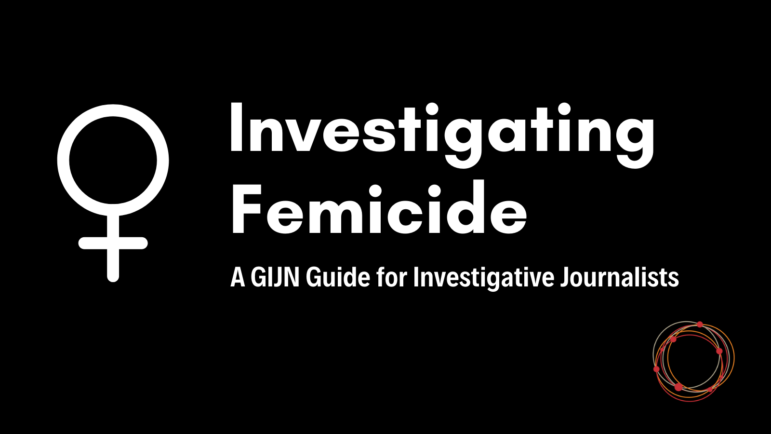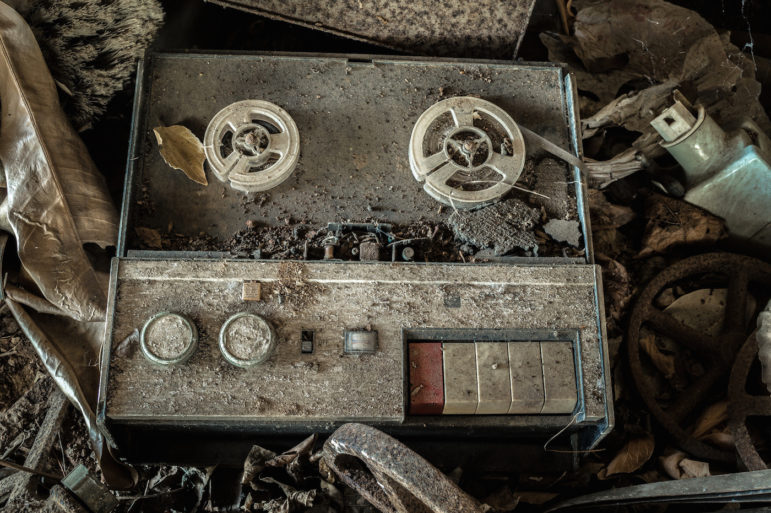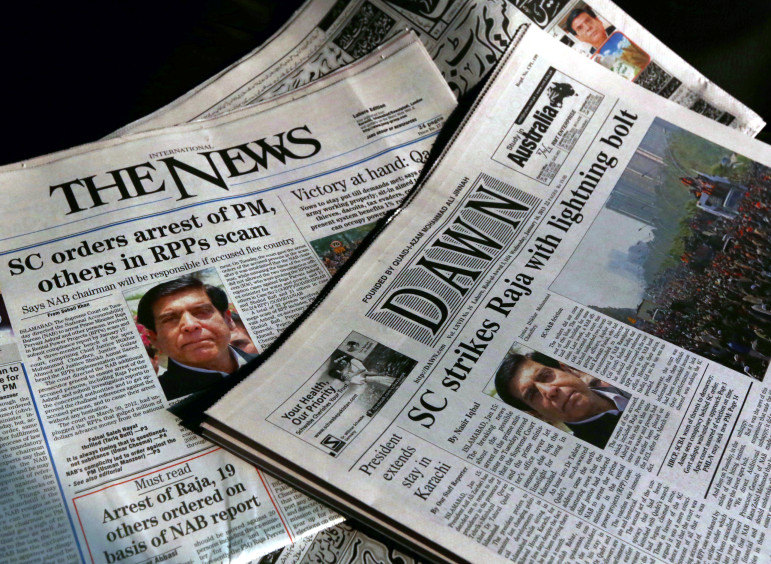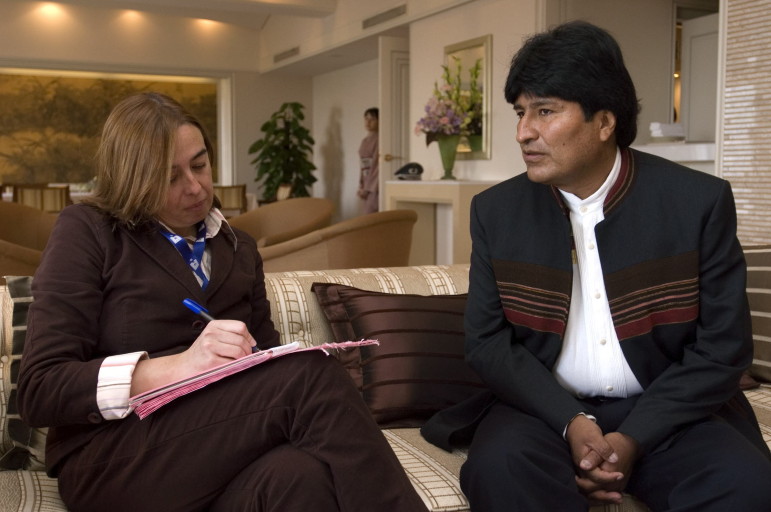

The Art of the Interview
Read this article in
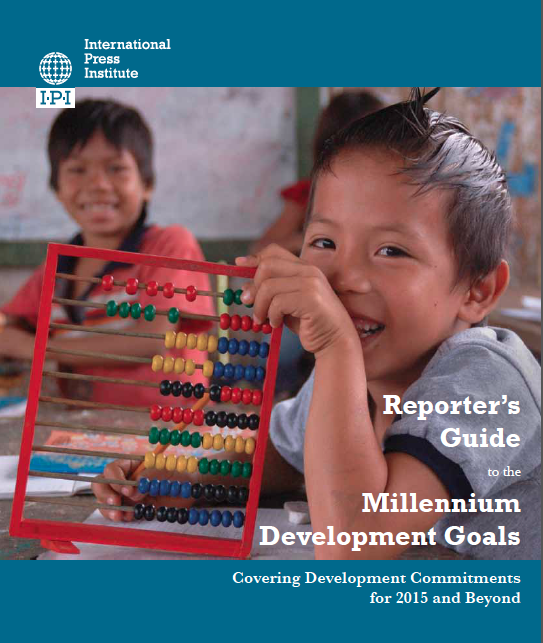 Part 14 in a series GIJN is excerpting from the Reporter’s Guide to the Millennium Development Goals: Covering Development Commitments for 2015 and Beyond, published by the International Press Institute.
Part 14 in a series GIJN is excerpting from the Reporter’s Guide to the Millennium Development Goals: Covering Development Commitments for 2015 and Beyond, published by the International Press Institute.
The interview is one of the—if not the—most important tools we as journalists have to obtain information, to expand on information we may have from other sources, and to clarify facts and see things from different perspectives.
We use the interview to expand upon the basic “who, what, where, how, when and why” of newsgathering. This is true whatever beat we may be covering: health, economics, politics, or issues having to do with the Millennium Development Goals (MDGs).
In covering the issues of poverty eradication, corruption, gender equality, and environmental and health concerns, the interview is the way in which the voices of not only experts but also the people most affected by these issues will be heard. The interview is the manner in which the voice of the often-unheard poor, and others affected by MDG issues, will be brought to a larger public.
Unfortunately, many journalists believe interviewing is simply a matter of asking questions and taking down the responses. Often, we pay little attention to this important skill. But to be a truly effective journalist demands we hone our interviewing skills to an art. This comes with practice, and by following certain guidelines:
1. Prepare, Prepare, Prepare
The quality of the information we get from our interview greatly depends on the degree of preparation we put into it. It is important to know the background of the subject you are covering and at least basic information regarding the interviewee. Here is where previous files of clips from your station or newspaper come in, as well as the Internet and your library.
Prepare a list of questions before hand, or at least a bullet point list of topics you want to touch on. But do not be so glued to your list that you break the next rule of the art of interviewing.
2. Listen, Listen and Listen
Be an active listener, and be very present during your interview. Do not become so preoccupied with looking at your list of questions that you miss something the interviewee says which calls for a follow-up question.
Especially when interviewing ordinary citizens, be present and attentive. Often they are sharing their pain—be respectful of that effort by listening in a polite and active manner.
3. Ask Yourself: What Do I Want To Get Out of this Interview?
Are you doing the interview to get a quick quote or sound-bite? Are you writing or producing a profile of a subject, which would call for a longer time and perhaps several interviews in different settings?
If the interview is for radio or television, perhaps consider whether the person will be a good visual or aural interviewee. Here, pre-interviewing by phone before hand is a good idea.
Ask yourself: Do I have a focus for the interview? Do I have a plan?
4. Choose the Best Place
Decide if it is best to interview by phone (if you do not need to have the interview in broadcast quality), or in person. Sometimes, busy people will be willing to speak with you on the phone for 15 or 20 minutes, but might be reluctant to do an in-person interview, as they think it may take longer.
If you have a choice, think about where might be the best place to do the interview. If you are doing this for radio or television, think about the setting and the noise level.
5. Make Your Interviewee Comfortable
Some people clam up when they see a microphone, or freeze when they hear the word “interview.” For the latter, you might say you want to set up some time to “talk” or to ask a few questions.
Make the person comfortable with some chit-chat before you start the interview. And if you are using audio or video recording equipment, explain it to them to put them at ease.
Be especially sensitive when interviewing victims or families of victims, be these people who have suffered some sort of crime or disaster, or are living under circumstances that the MDGs try to address. Remember that whatever the circumstances, people who agree to an interview or to be photographed are giving you not only their time, but in some ways, as some indigenous groups believe, they are giving you a bit of their soul. Be very grateful and sensitive to that gift, and be very present in the moment of that interview.
If your interviewee becomes emotional during the interview, give him or her a moment to compose themselves. It is okay to let them know that you understand their situation and that by their agreeing to the interview, others will also understand their position.
6. Maintain Control of the Interview
Do share the general focus of the interview with the interviewee. Do not, however, generally share your list of questions. This would result in a scripted, stilted interview.
If you are using a microphone, never lose control of the mike. Never let the person you are interviewing grab it from you.
If you are interviewing a public official or anyone else at an office, it is preferable not to do the interview across a desk—try to see if there is a sofa or other seating arrangement where you might do the interview without a big space/power symbol between you and the person you are interviewing.
Other Points of Advice
Asking Difficult Questions
It is generally a good idea to start off the interview with softer, less controversial questions. As the person you are interviewing becomes more comfortable, it may become easier to bring up the harder subject. You may want to phrase your question by attributing the assumption to a third party: “Your opponents say such and such … How do you respond?
The E-mail Interview
Sometimes it is just not convenient or possible to interview someone face-to-face, or even by phone, so you can consider the possibility of doing an interview by e-mail. These are not ideal, either as an interviewer or an interviewee as details gained in a face-to-face interview are missed. There is no opportunity to make observational notes, which means nuances or a hesitation in a response that may be valuable are lost.
Practice, Practice, and Practice
The art of interviewing may be at the same time the simplest yet most difficult part of practicing journalism. Keep honing your art by trying to be better each time you do another interview.
What Questions Work Well in an Interview?
• Ask the person for his/her name and position up front.
• Ask open-ended questions that will elicit more than “yes” or “no” answers.
• Keep your questions neutral in tone.
• Ask for definitions, examples, anecdotes.
• Ask questions your audience/readers want to know the answers to.
• Keep your questions short and to the point.
• Ask one question at a time (do not double-up on questions).
• Be prepared to ask follow-up questions—and be sure to be listening for questions that require a follow-up.
• Do not make assumptions.
• Make sure you are asking a question, rather than making a commentary.
• Do not argue with the person you are interviewing.
• Do not try to cover too much territory during the interview. Remember your focus.
• Be polite, but persistent. Keep asking until you get a response to your question.
• Prepare a closing question.
• After the interview is over, ask if there is something he/she would care to add. (This often elicits a very useable interview segment.) Also ask if he/she recommends other people to interview … and if you may contact him/her should you have further questions or need to clarify.
Tips for Managing an E-mail Interview
- Often, when I am asked to do an e-mail interview, I receive a long list of questions to which a thoughtful response would take up much more time than I have. So if the only option is an e-mail interview, first of all, do be thoughtful of your source’s time and limit yourself to no more than three to five questions.
- Identify yourself and your news organization to your source. Let them know how you came to contact them. Where did you find their name and contact? When you send your questions, also ask for the opportunity to ask follow-up or clarifying questions should you have any.
- Let them know what your deadline is. Follow up if you have not heard from them, and also send your questions to several sources, especially if you are on deadline.
- Once you have received a response, do follow up to ask for clarifications if you have the need. Then be sure to send a thank you note with an offer to send a link to your finished article (Do follow up on the latter if you made the offer).
- With the widespread availability of Skype, I prefer to use this technology for phone interviews. There are a number of programs that let one easily tape these interviews (be sure to let your sources know you are taping the interview).
- Whether you use phone, Skype, or the Internet, be sure to prepare for your interview.
Russian translation available here.
 María Emilia Martin is a pioneering public radio journalist and the recipient of over two dozen awards for her work covering Latino issues and Latin America. She started her career at the first community public radio station owned and operated by Latinos in the U.S. Since then, she has developed groundbreaking programs for public radio, including NPR’s Latino USA, and Después de las Guerras: Central America after the Wars. A recipient of Fulbright and Knight Fellowships, she has extensive experience in journalism and radio training in numerous countries in the Americas, including Mexico, Guatemala, and Bolivia. She now heads the GraciasVida Center for Media and GraciasVida Productions based in Austin, Texas and Antigua, Guatemala.
María Emilia Martin is a pioneering public radio journalist and the recipient of over two dozen awards for her work covering Latino issues and Latin America. She started her career at the first community public radio station owned and operated by Latinos in the U.S. Since then, she has developed groundbreaking programs for public radio, including NPR’s Latino USA, and Después de las Guerras: Central America after the Wars. A recipient of Fulbright and Knight Fellowships, she has extensive experience in journalism and radio training in numerous countries in the Americas, including Mexico, Guatemala, and Bolivia. She now heads the GraciasVida Center for Media and GraciasVida Productions based in Austin, Texas and Antigua, Guatemala.
Excerpted from Reporter’s Guide to the Millennium Development Goals: Covering Development Commitments for 2015 and Beyond. Agreed to in 2000, the UN Millennium Goals comprise an ambitious agenda to improve quality of life around the world, focusing on such issues as poverty, gender equality, and education. This unique manual, available in four languages, offers journalists practical tips on covering these critical areas as we near the 15th anniversary of the goals. Twenty-one journalists across six continents contributed to the report, including several active in GIJN. We are grateful to the publisher, the International Press Institute, for permission to publish the series, and to the European Press Photo Agency and EFE Agency for permission to publish the accompanying photos.

